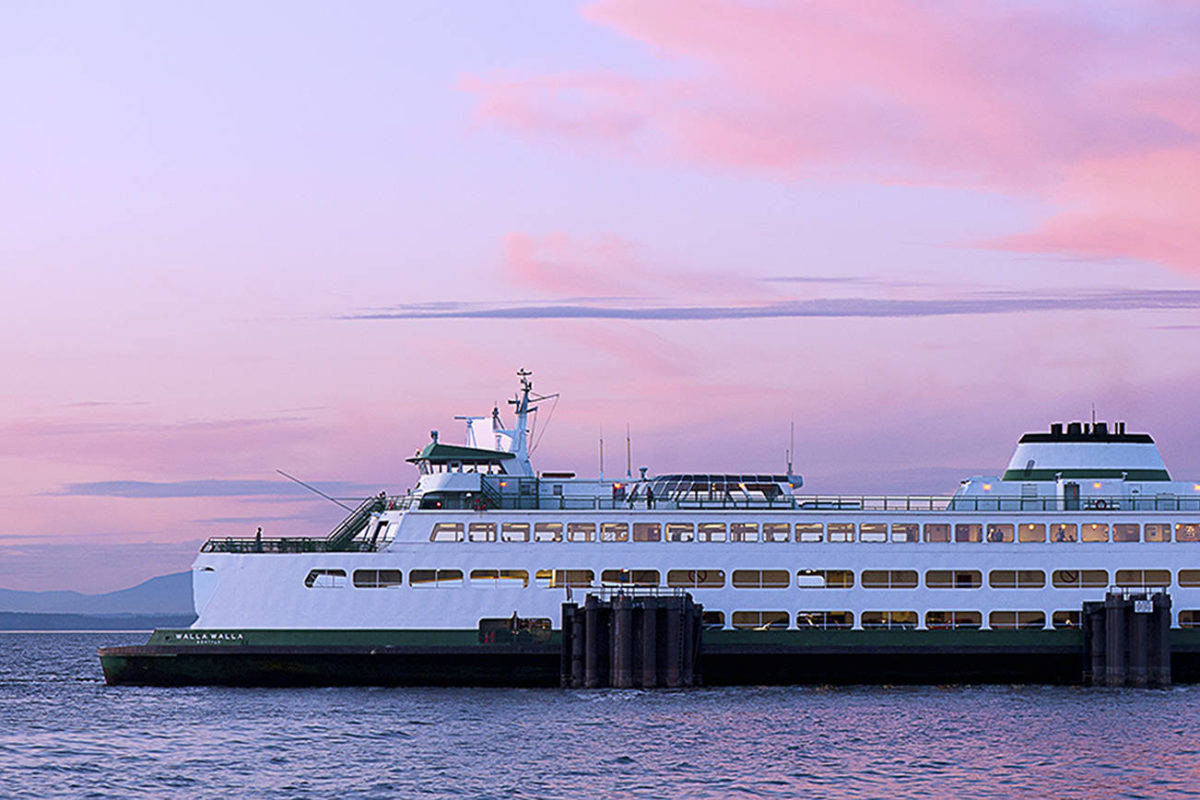The Hyak is officially retired as of July 1, the Elwha is headed into the shop for more repairs and the ferries are rarely on time — welcome to summer 2019 in the San Juans.
The Journal sat down with Washington State Ferries Strategic Communications Manager Hadley Rodero to find out the scoop on some of the islanders’ biggest questions about the ferries.
Vessel schedules
“That’s sort of our next big [projects] up here. We’re just starting to talk about a schedule update,” Rodero said. “This schedule up here hasn’t had an update in a long time. … There’s a number of reasons we’re due for a full refresh.”
As Rodero stated the last time she spoke with the Journal, the current schedule has not been altered since before the reservation system was enacted, and since then a vessel speed slowdown was enacted by Legislature to conserve fuel and aid in sound mitigation for the Southern resident orcas.
The process for a complete overhaul of the schedule could take years, Rodero explained, adding that the Fauntleroy/Vashon/Southworth route — also known as the triangle route — took two years. She added that the plan is to begin working on the San Juan schedule update in the next six months.
“Everyone has different needs, and it’s a balance,” Rodero said about the ability to just simply change the schedule. “It’s usually a pretty big engagement process. … You could be on time by reducing the number of sailings but people don’t like that either because there are fewer opportunities.”
According to Rodero, there are 13 unions representing the employees of ferries, and each union has its own set of standards laid out in its contract with the agency. When the ferries get too far off schedule the department makes the decision to cancel the last run because of the overtime work it would incur.
“Our budget is so tight right now that you get into overtime if you go beyond the sailing day,” Rodero said. “We can do that some of the time but we can’t do it on a regular basis — you can’t sustain it.”
Another consideration that wasn’t built into the summer schedule is the international route’s riders requiring to go through border control and customs twice — once in Friday Harbor and once again in Anacortes.
“Because it’s not a secure system from there,” Rodero said. “It’s not built into the schedule because we didn’t used to have people making that connection as often, and now there’s heavier traffic on that route.”
Sundeck situation
A situation that caused frustrations to islanders early in June, WSF spokesman Ian Sterling told the Sounder that the sundecks on the Olympic-class ferries would be closed during the summer months.
“We didn’t get additional funding to add two crew members to those routes on a regular basis,” Rodero explained. She added that Legislature did budget for a few days in the summer so that the Samish sundeck can be opened.
This closure of the sundeck limits the passenger capacity to 768, which Rodero said the ferries on the San Juan Island route rarely reach.
“We’ve only tripped above that number a handful of times,” Rodero added.
Customer satisfaction
The San Juan Islands route resides about in the middle of all routes when it comes to customer satisfaction, according to Rodero.
“There’s certain routes that have a higher level of dissatisfaction at the moment than here,” Rodero said. “Here it’s more seasonal.”
The passengers on the triangle route are least contented, Rodero explained. Much like the San Juans, that route is affected when vessels have to be moved around because of inspection or maintenance — it is the only other route that has more than two ferries on it.
“They also have a lot of challenges with their terminals,” Rodero continued.
Additionally, the staging lot at Fauntleroy was built in 1950 and is not ideal for the daily traffic it receives. Rodero noted that ferry lot is smaller than Lopez Island’s.
“So it’s taking like Lopez and making it a commuter route,” Rodero said.
Funding
With an initiative coming to the ballot this November to reduce the annual vehicle registration fees to $30, Legislature didn’t put a lot of funding toward the state’s transportation budget. When a similar initiative passed in the 1990s, the transportation department was underfunded for more than a decade.
“That’s why they were fairly conservative this year in funding,” Rodero explained. “We’re waiting to see what happens with that.”
Summer sailing schedule
Because the department has operated on a reduced budget for years, WSF put off performing more maintenance than just what was needed to keep the boats running, according to Rodero.
“And that’s where we keep finding the deferred maintenance leads to things like the Elwha steel where they kept finding more and more and more,” Rodero said.
Last summer, the Elwha went in for steel replacement which ended up costing $25 million. With more work to be done, the Elwha will be leaving the route in a few weeks.
According to WSF’s Alternate Service Plan, formerly known as the Summer Service Plan, if a vessel in Friday Harbor needs maintenance, the trip to get to the dry dock to receive that work is six hours one way to the Eagle Harbor facility on Bainbridge.
WSF’s plan for the islands — which is always open for adjustment based on vessel needs — include having Samish and Yakima for Anacortes to the islands and back, Chelan for the international route and Tillikum for interisland serve all summer. Until Elwha goes into dry dock for more service, it will be the fifth boat on the San Juan route. It will be replaced by the Kitsap and then the Kaleetan to wrap up the summer season.



